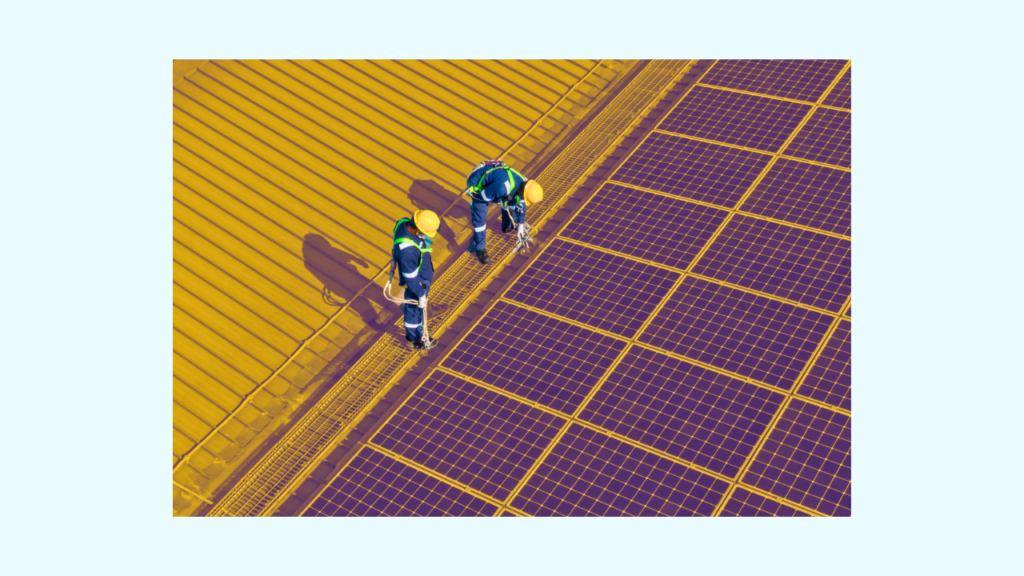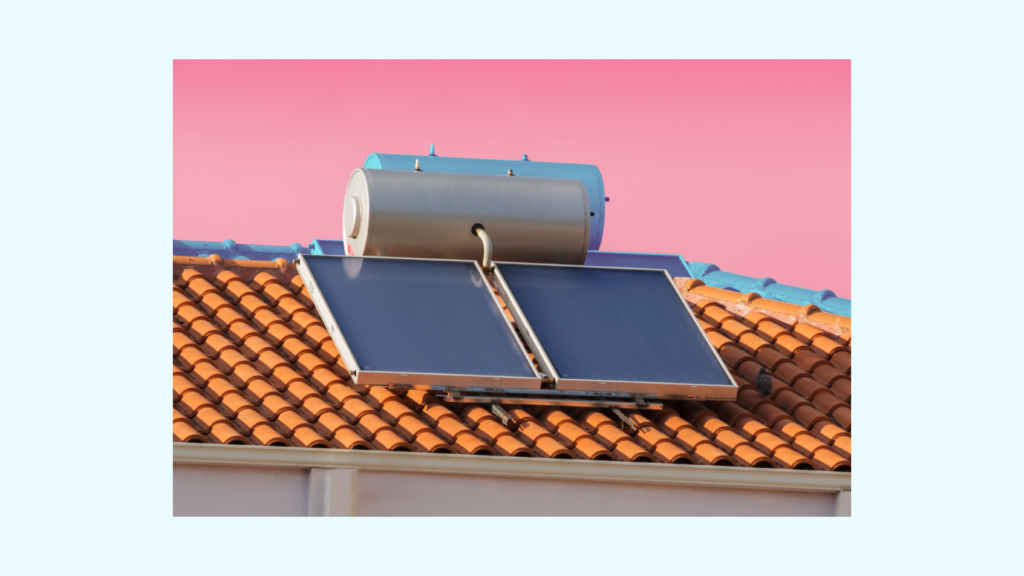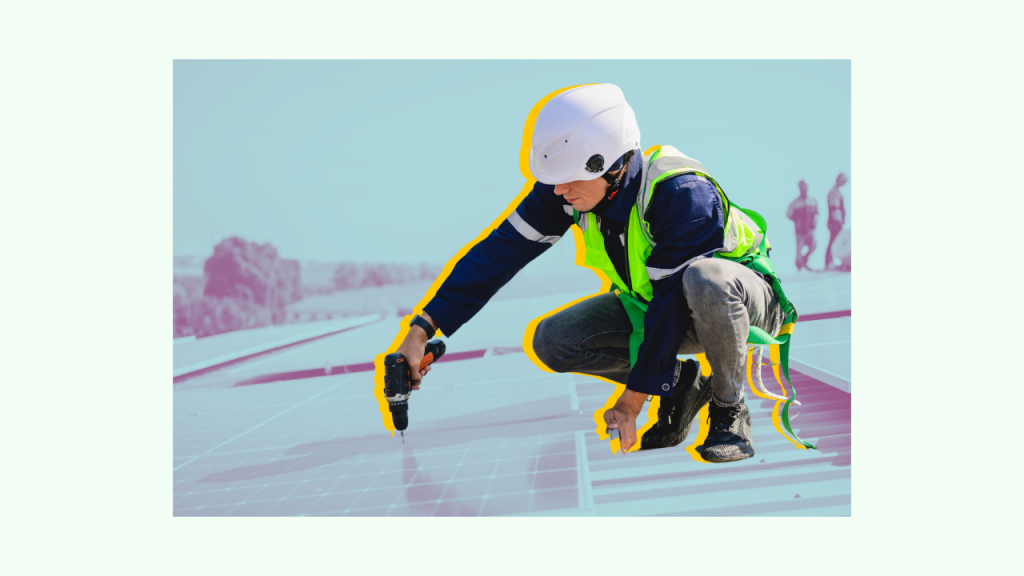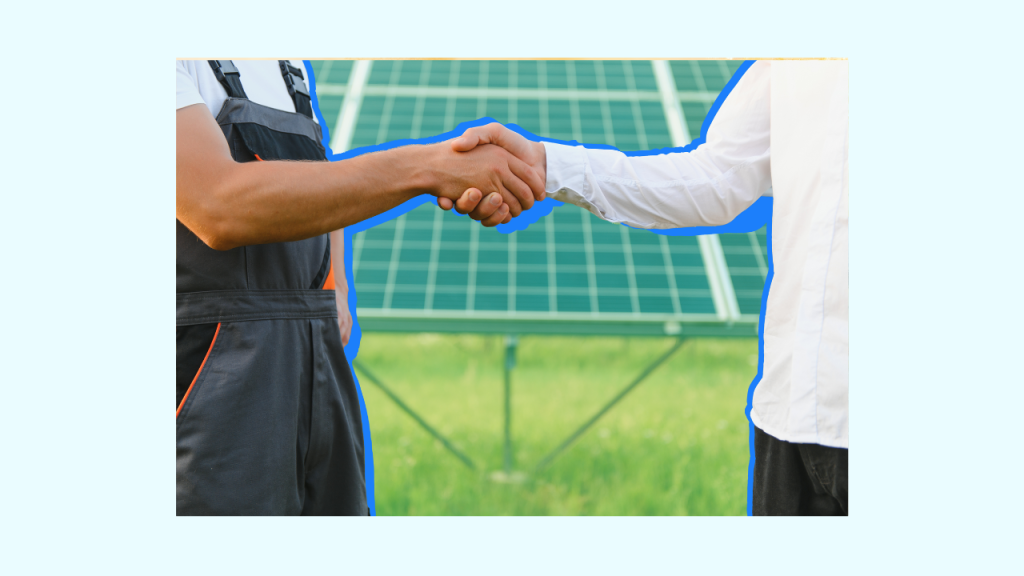Home solar panel installations are getting popular in Singapore. That said, some rooftops are more suitable than others for solar installation, and several factors can affect the suitability of your rooftop for solar. In this article, we break down three important factors to look out for and some relevant considerations before you install solar on your roof.
Table Of Contents
Rooftop Solar Suitability Considerations
1) Size Of Roof
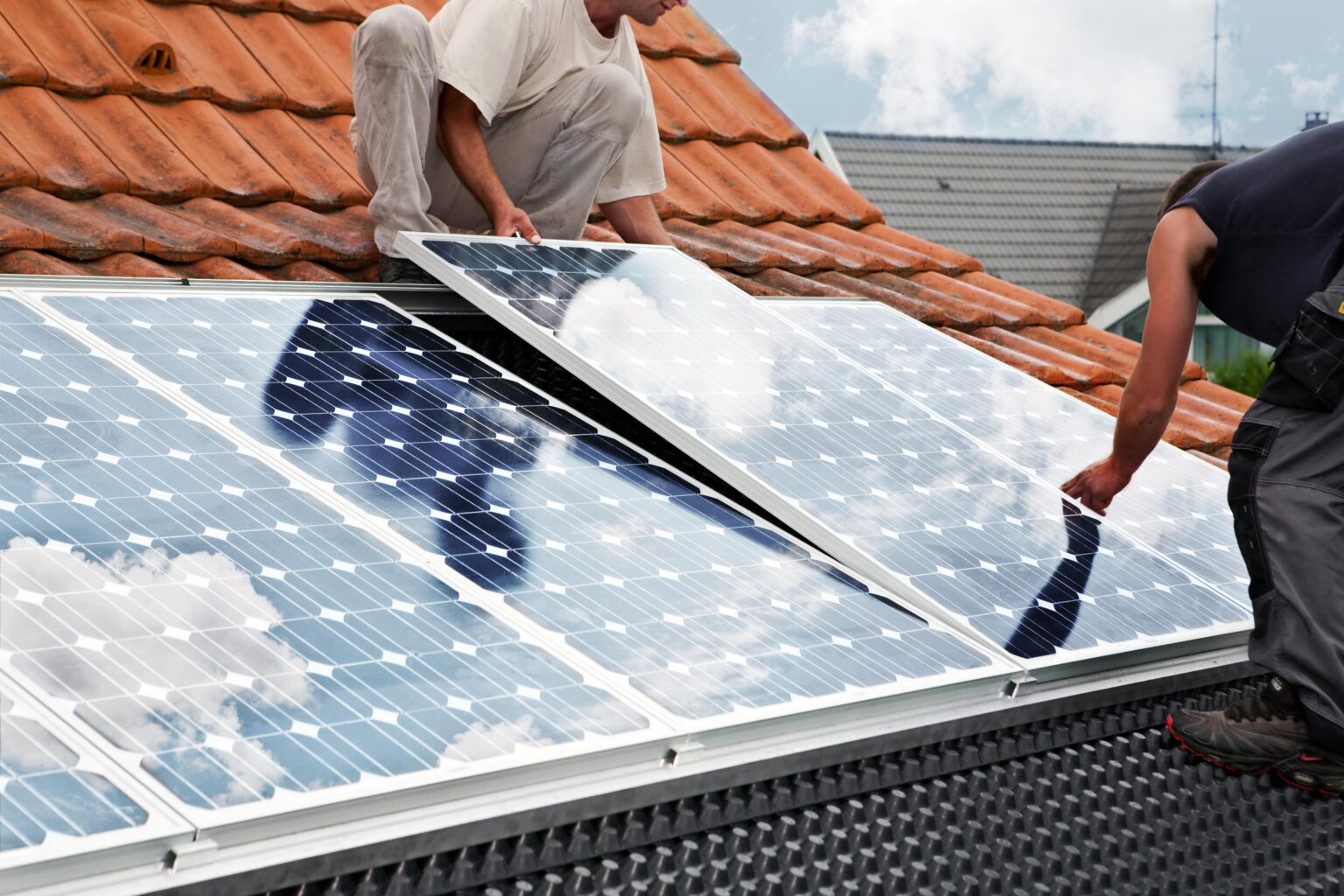
Solar panels can come in different shapes and sizes, and differ based on the brand and type of solar panels that you want to install. That said, the average size of a rooftop solar panel is approximately 2 metres by 1 metre. With that in mind, significant rooftop space is needed to effectively install these panels.
It’s also important to take note of any possible obstruction or areas of concern on your roof as this might disrupt or change the layout of solar panels on your roof. Skylights and dormer windows are the most common rooftop obstructions. Solar installers are usually able to work around these obstructions, but they often also means less space on your roof available for solar panels.
2) Amount of Shade On Roof
Most of us will know that solar panels convert sunlight to electricity, and generate more electricity when there is more sunlight. Because of this, shade can significantly diminish the amount of power that a solar panel setup can generate. Shading can come from both direct and indirect sources, and the most common sources of shading to look out for are trees, other properties in the area or even other parts of your roof like dormer windows or chimneys.
However, even partial shading on one of your solar panels can have a dramatic impact on the energy that your solar system produces. When solar panels are connected in a string to a centralised inverter system, even if only one of the solar panels is shaded, the output of the other panels will be brought down to the weakest panel. Think of it as water flowing through a pipe — the width of the pipe has to be consistent across the pipe for water to flow well. Similarly, current flowing through a string of solar panels has to be constant to allow for the solar panel system to perform optimally.
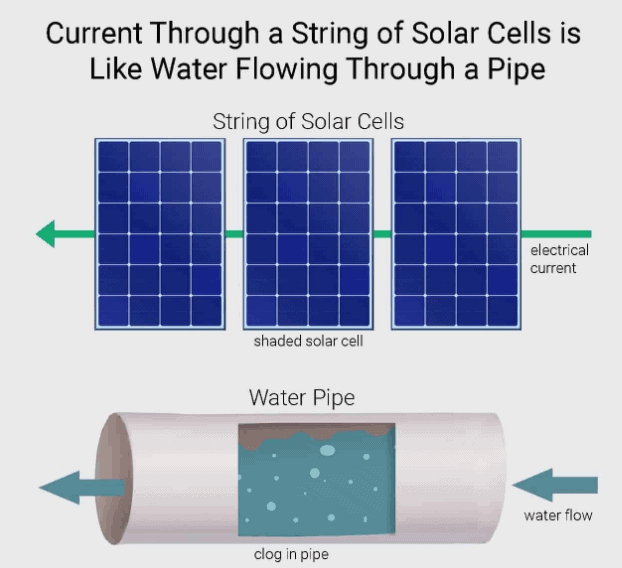
This means that if your roof is significantly shaded or has shadows cast on it for extended time durations — for example, due to large trees or neighbouring buildings — installation of solar on your rooftops might not be the best option. The bottom line: the more direct sunlight your rooftop is exposed to, the greater its solar suitability.
However, if your roof is partially shaded, it doesn’t mean solar is no longer suitable for you! There are now technologies that can overcome this and improve the performance of your solar PV system under shading. Continue reading below to learn more about these technologies.
3) Angle and Direction of Roof
Ever heard that south-facing roofs are the best for solar panels? Well. it’s time to bust this misconception! This is not true for Singapore and is only relevant for countries like the United States in the Northern Hemisphere. As Singapore lies on the equator, the direction your roof faces doesn’t really matter — though east-facing roofs are a little more optimal for solar with the highest sun exposure.
However, a more important solar rooftop suitability consideration in Singapore is the angle of your rooftop. If you’ve got a flat concrete roof in Singapore, you’ll notice that solar installers will propose a racking system to tilt your solar panels eastwards, usually at an angle of about 10 degrees. This maximises the sunlight your panels will receive, but also allows your solar panels to be “self-cleaning” when it rains.
Solar irradiance (a measure of the sunlight your panels receive) tends to vary by 2-5% based on the direction that your panels face. But, solar energy output can fall up to 20% when you compare between 2 rooftops that are tilted at 10 degrees and 45 degrees. You can find an illustration of how solar irradiance is affected by both the direction and angle of your roof (or your solar panels) below.
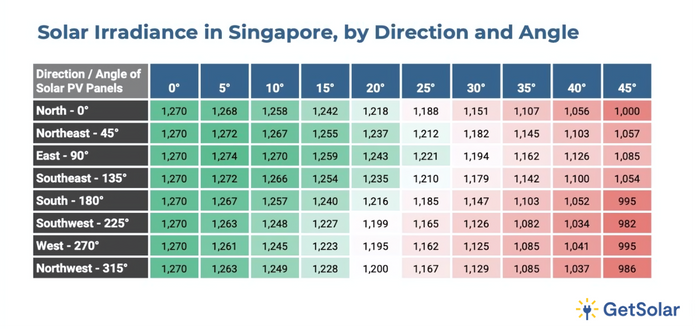
If your roof has multiple faces (in different directions) that you are installing solar panels on, each string of solar panels placed on each roof face will also get a different amount of solar irradiance. With a similar principle to partial shading, if the solar panels are connected to a centralised inverter, the string of solar panels with the least sunlight at any one time will drag the power output of the other panels down. As a result, you will need a multi-string inverter (also called a multi MPPT inverter, which stands for Maximum Power Point Tracker), with each string wired into its own MPPT in the inverter. Luckily, most of the popular inverters in the market have two independent MPP trackers, allowing you to connect and place your panels on two different roof faces.
Checked all the boxes roof suitability? Click below and give our solar simulator a try! You’ll be able to view your estimated price and cost savings when you install rooftop solar!
Should I Use Microinverters and Power Optimisers?
That said, this doesn’t mean that your roof wouldn’t be suitable for solar if it’s shaded, or if it has many different roof faces and angles. Microinverters and power optimisers (also known as DC optimisers) are increasingly popular technologies used to avoid or mitigate the adverse effects of shading and roofs with multiple faces.
Remember learning about parallel versus series circuits in science class? Microinverters and power optimisers are like parallel circuits, compared to the traditional string inverters which are a series circuit.
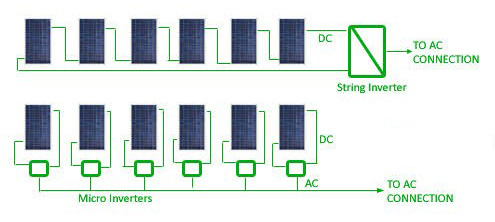
Microinverters work by having a small inverter — each with an independent Maximum Power Point Tracker (MPPT) — attached to each solar panel in order to convert its output from direct current (DC) to alternating current (AC). Compared to having a single inverter solar panel system, each panel will operate at its maximum power point, without impacting other panels.
Power optimisers (or DC optimisers) are similarly connected to each panel. But, instead of using a microinverter, the optimisers “condition” the DC electricity generated from each panel. This is done by adjusting each panel’s output voltage and current to maintain maximum power without compromising the performance of other modules.
While these technologies may be able to significantly increase the output of your solar system if your roof is affected by shading or a complex roof structure, they also add on significant costs to your solar PV setup and creates more potential points of failure on the system. The use of microinverters or power optimisers are hotly contested in the industry, and we highly encourage you to reach out to us to find out more, or explore these options with your solar installer and request an analysis of the returns on investment to help you weigh out your options.
This article was first published on 23 September 2020 and last updated on 14 June 2024 to include additional details.
Get an Instant Solar Estimate for your Home Now!
Whether you’re ready to install solar panels on your rooftop, or just wondering how you can benefit from solar, use our instant solar assessment tool to get an estimate of the solar potential of your property and find out how much you can save. At GetSolar, we combine geospatial analysis of satellite imagery with big data and artificial intelligence to provide you with reliable and accurate solar information so that you can make a better solar choice!
